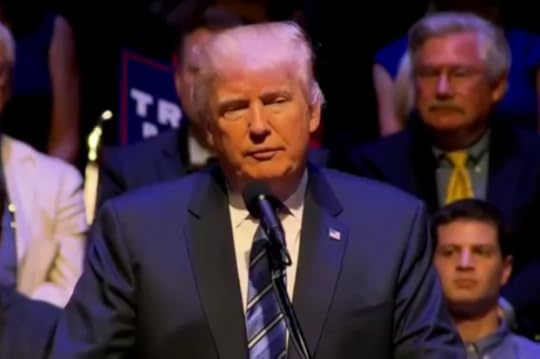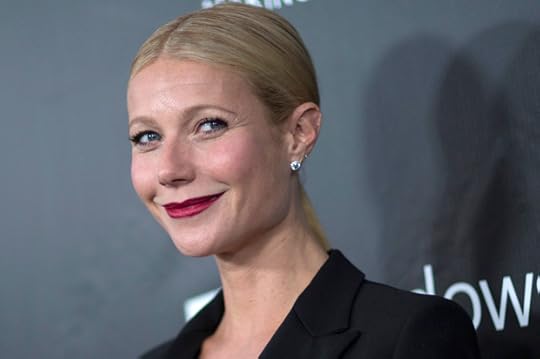Helen H. Moore's Blog, page 698
August 5, 2016
It’s a sin: Women’s lives at risk thanks to holier-than-thou Catholic Hospitals

(Credit: AndreyPopov via iStock)
Catholic health care services are buying up an increasing number of hospitals in the United States — 1 in 6 hospitals now answer to the Catholic authorities — and in many towns, the only hospital in the area is Catholic. This normally wouldn’t be a problem, except that these hospitals usually have to follow the Ethical and Religious Directives for Catholic Health Care Services, which expressly forbid any care seen as fiddling with the “natural” course of reproduction. Interpreted faithfully, means no abortion, no contraception, no sterilization, and a ban on many fertility treatments.
Some hospitals even frown on referring patients out so they can get these services elsewhere.
Researchers from the University of Chicago and the University of California, San Francisco have a paper coming out in the September issue of Perspectives on Sexual and Reproductive Health that looks at the impact of these policies on the ability of physicians to act according to their conscience and medical judgement.
The answer was not good. In interviews with 27 physicians with a variety of personal religious beliefs, the researchers found that these directives frequently infringed on a doctor’s conscience, forcing them to offer less than the best standard of medical care. While it was uncommon for doctors to flatly denied the right to refer patients out — often sending them to Planned Parenthood — having to do so still caused unnecessary stress and medical risk for the patients.
“For example, if a patient wants a post-partum tubal ligation but delivers her baby at a Catholic hospital that prohibits sterilization, the doctor commonly refers the patient to a different hospital to get a tubal ligation at a later time,” researcher Debra Stulberg explained over email. “But depending on the patient’s specific situation, this can increase the risk of harm to patients or leave the patient with serious barriers to getting care.”
For instance, she went on to explain, if a C-section patient feels done with her child-bearing, it’s often in her best interest to perform a tubal litigation right then and there, to minimize the number of times the doctors have to cut into her. But forcing the doctor to refer her out for the sterilization means “the unnecessary risk of a second surgery and second round of anesthesia” at another hospital.
In other cases, Stulberg went on to explain, doctors had patients come in “in need of immediate treatment which the Catholic hospital would not allow,” forcing the doctor to send the patient to another hospital.
“In some instances doctors felt this transfer or referral was not in the patient’s best interest, because it meant a delay in treatment and the patient having to go to an unfamiliar care setting,” Stulberg explained.
It’s tragic enough, for instance, having a miscarriage. But being shuffled around from hospital to hospital because your usual one considers it “abortion” to clean out the uterus after a failed pregnancy makes it much worse.
Because of this, many doctors consider not accepting new patients “who might have similar complications” in the future. But, to make the situation even worse, the hospitals often pressure them into taking these patients anyway, because services like childbirth and fertility treatments are lucrative. So doctors who want to do a good job are being pressured by employers to take on patients, and then they are forbidden from offering them the proper course of treatment.
Reading the study, what is striking is how these Catholic directives force doctors to violate their own consciences. Making women jump through hoops or even go through extra surgeries to get basic care is, to a responsible physician, unconscionable behavior. But their Catholic bosses leave them no choice but to do things they know are wrong, all in the name of “ethics”.
It’s ironic, because the anti-choice movement has seized on the idea of “conscience” as a weapon to use in their war on reproductive health care.
Last month, the House passed the Conscience Protection Act, which supposedly prevents discrimination “against a health care provider based on the provider’s refusal to be involved in” abortion.
On the surface, it sounds all fine and dandy — no one wants to force doctors to perform elective abortions if they don’t want to — but if you dig into the bill’s language, it immediately becomes apparent that this is about giving a bunch of random people, most of whom are not doctors, the right to stop your abortion on the grounds that what you do with your body somehow violates their conscience.
The trick is in how the bill defines “health care provider.” Most of us hear that term and think “doctor” or maybe “nurse.” But according to Republicans, a whole range of people are owed ownership over a woman’s health care decisions.
“Health care providers include health care professionals, health care facilities, social services providers, health care professional training programs, and health insurers,” the bill reads.
The term “health insurers” is vague, but the White House argues that the intention is to define it so broadly as to include a woman’s boss, on the grounds that because they offer health insurance as part of the benefits package, that makes your boss your “health care provider.”
Indeed, the political background of this bill demonstrates that the point of it is to redefine a woman’s boss as her “health care provider.”
The bill was a reaction to California passing a law requiring health insurance plans to cover abortion, which would restore the abortion decision-making power to those who are directly affected, i.e. the patient and the doctor, and not have other people, such as your boss, meddling with it. So the right created a workaround, trying to redefine a whole range of people as “providers” so any one of them can deny a woman abortion coverage.
The conservative definition of the word “conscience” is, it turns out, quite slippery indeed. In Republican-land, the person whose “conscience” is most relevant to the abortion or contraception decision is never the person who is closest to the decision, the patient herself. And it’s almost never the person second closest to it, the doctor.
No, the right of “conscience” is always given, by conservatives, to faraway, often abstract authorities: The church, far-away bishops, the CEO of your company. They don’t know you, but, according to Republicans, they know better than you or your doctor what’s best for you and your family.
August 4, 2016
Millennial sex panic! Why are we so worried they aren’t getting enough action?

Young couple not having sex. (Credit: pixdeluxe via iStock)
Our culture seems to be obsessed with who’s having the most sex (unless they’re having too much and are therefore slutty and should be shamed for their erotic proclivities), who’s having the least sex and how we can move those in the latter category into the former.
This is what I was thinking about as I read the latest hoopla over the lack of bedmates of millennials 18 and over, inspired by a recent paper in the Archives of Sexual Behavior. As Science of Us quoted the paper’s authors: “Millennials, especially those born in the 1990s, were significantly more likely to have no sexual partners as adults compared to Gen X’ers born in the 1960s.”
While the study’s findings are of cultural interest about changing sexual practices, an unfortunate side effect is the concurrent media sex panic. To wit: a Washington Post headline asked if this means “the end of sex?” while The Cut touted “Millennials Confirm That Sex Is No Longer Cool.”
Another headline read “No sex please, we’re Millennials’ iGeneration doesn’t like it hot.”
'No sex please, we're Millennials' iGeneration doesn't like it hot https://t.co/puWGBuZQlX pic.twitter.com/wmySS9DOd7
— RT America (@RT_America) August 2, 2016
Also making news this week: a separate new study by ad agency Havas Worldwide is now having us fret that millennials prefer food over sex, some of the time, anyway, to which I say—who cares? That may sound callous, but I simply can’t get behind what feels like the opposite of slut shaming in a push to urge young people to pursue sex like their social lives depend on it.
Sex is not a milestone we need to pass on like the holy grail; every generation is entitled to define their sexuality however they like, even if that means they’d prefer to just take a break from it. If, for millennials, this means engaging with their fellow human beings in different ways, whether that’s taking more time for themselves (whether that’s playing video games or blogging or eating or reading or just getting to know who they are as individuals), bonding in friendship groups or cuddling, sexting, flirting online or some other form of erotic communication, who are we to judge?
Yet judging seems to have become a form of social sport, a way to mock millennials for not knowing what they’re missing, as if us older folks have the right to judge from the high point of sexual nirvana.
You might think that as an erotica writer, I’d be encouraging people to have the most sex they possibly can, but I find that idea abhorrent. The truth is, I too would sometimes prefer a fine meal over sex, and I don’t see why we have to rank one activity as inherently healthier than the other. They can peacefully coexist, and just as some people are foodies who live to eat, others eat because they need to to survive; we should accept that those two types of appetites also have sexual corollaries.
The Washington Post, in a separate article, quoted a 26-year-old financial analyst named Sam Wei, who hasn’t had sex in 18 months—by choice. She could if she wanted to, but she’d generally rather bond in other ways, like kissing and cuddling. “To me, there’s more intimacy with having someone there next to you that you can rely on without having to have sex. I don’t want to do anything that would harm the relationship and be something that we can’t come back from,” she told the paper.
I dare anyone who finds her attitude repellant to get honest about the fact that sometimes sex is disappointing; sometimes it does ruin friendships. I’m not here to be a nookie naysayer, but I completely understand where she’s coming from. Even if I didn’t, it’s in no way my place to decide for her what forms of closeness to her fellow humans she should prefer; that’s just as galling as saying “sex” should only encompass penis-in-vagina intercourse.
A younger millennial, 18-year-old Noah Patterson, has never had sex because he’d rather “be watching YouTube videos and making money.” He said he’s not curious about the act because, “I’ve seen so much of it. . . . There isn’t really anything magical about it, right?”
It’s his indifference that seems to have riled so many who feel compelled to convince others that sex is, indeed, “magical.” But why does sex need a PR campaign? Why can’t he be entitled to entertainment and business over sex? I was tempted to add “for now,” but that’s just buying into the idea that sex will eventually lead everyone down their personal yellow brick road to a happy life. Maybe not everyone’s utopia involves getting it on; we should all be adult enough to admit that sex is not a panacea or the ticket to a perfect life.
I agree with millennial Melissa Batchelor Warnke, who wrote in the Los Angeles Times that sex “isn’t an absolute good,” but instead, “it’s only good if it’s a thing you want to do, if it’s an act that brings you fun or connection or pleasure.”
Her take is that “The problem isn’t that millennials are having less sex, but that many of their reasons reveal warped values and a fear-based approach to existence. Here’s a generation swearing off a life-affirming and life-creating act in record numbers, simply because they don’t know what to do with it.”
While I agree with her that millennials may be eschewing sex because they are afraid of its consequences, I still can’t get behind what feels like a paternalistic and belittling way of judging their choices
If we want to value sexual freedom and autonomy, we have to do so for those who prefer nightly orgies as well as those who’d rather hold off on sex, whether for a given period of time, indefinitely or even permanently.
I’m far more offended by the fact that Norman Spack, associate clinical professor of pediatrics at Harvard Medical School, felt free to insert his own subjective sexual cheerleading by telling the Washington Post, “Everyone’s missing out on a good time,” than by whatever the statistic du jour is about millennials getting it on.
What if someone else’s version of a “good time” is different from yours? What’s also missing largely missing from these conversations is how we measure the meaning of sex in our lives. If we are still counting “having sex” based solely on the number of times we got naked and rubbed up against someone else, we are missing out on all the rich variety of erotic connections people can have with each other. I’ve had phone sex and sexted in ways that were more stimulating, arousing and mind-blowing than some of my least favorite skin-on-skin sexual experiences, and I’d venture that millennials half my age, who are even more digitally connected, have very likely explored non-physical contact erotic interactions that also had a huge impact on them. Where does that fit into the dire headlines?
That being said, if people are shying away from sex because they’ve been fed misinformation by abstinence sex ed programs (or schools’, teachers’ and parents’ silence around the topic), that is indeed a shame. But I think we can give millennials, who have access to teen and emerging adult sex ed sites like Scarleteen at their fingertips, a little more credit than that. I would love to see a world where consenting adults can pursue whatever their sexual and non-sexual interests are with equal fervor, one that supported and valued our right to choose what we do or don’t want in the bedroom, rather than simply waiting with a clipboard to tally up our numbers and give us a score we never asked for.
“This is fine” cartoonist on why it’s not fine, after all: It’s “a response to how weird and bad 2016 has made me feel”

It became a kind of digital-world version of “Keep Calm and Carry On,” even though it portrayed a cartoon dog in a burning house. Either whimsical or satirical, cute or frightening, K.C. Green’s comic of a coffee-loving hound with the words “This is fine” became a ubiquitous meme beginning in 2013. Use appears to have ramped up as the presidential election has, to the point where Twitter users aren’t even posting the image anymore, reducing the visual shorthand down to its most elemental form:
this_is_fine.jpg pic.twitter.com/TO0GNA5RGg
— Brandon Wall (@Walldo) July 24, 2016
So when the site The Nib ran a new version of the cartoon with “THIS IS NOT FINE!!”, it seemed like something had shifted in the fabric of reality. Had the chaos of 2016, and the shouting behind the political race, finally gotten to Green and his famously chilled-out dog?
Salon tracked down the comics artist to get at the meaning of his new cartoon, and to discuss the announcement that he’s Kickstarting a plush-toy version of Question Hound, which at press time had already raised almost $200,000 more than its initial $35,000 goal, with 28 days left to go. Green corresponded with us from his Massachusetts office; the interview has been lightly edited for clarity.
You’ve done numerous cartoons over the years. Why do you think your “This is fine” dog has become so widely known and loved?
Well, that’s the whole idea of a meme. It gets around. Not by my hand, but by everyone’s hand. People like it, reblog it, etcetera. And I think since this is more recent, it was easier for people to trace it back to me. Plus I have a good fan base of people pointing others in the right direction on Twitter, Facebook, Instagram, and anywhere else it’s seen. Why it’s loved, I assume and hope it’s that people see themselves in the dog, tryin’ his best to ignore his problems and continue on. I see a lot of people use it oppositely, thinking “ha ha this person must be feeling this way now due to the news of their problems leaking” or whatever. That’s more rude. I feel like it’s more the relatable thing that keeps it going, rather than the other.
It’s also interesting that the first two panels, which are weirdly reassuring, are the two most people know: Rarely do we see the dog melting into oblivion. Maybe people prefer the optimistic version? Or is it mock-optimistic?
Yes, it’s easier on the eyes than watching his skin melt off! I also think that’s just how it started as a meme. I remember first seeing someone on Instagram post those two images and talking about “finals got me like” or something. So it just goes from that point and most people who know the meme don’t really know the whole comic.
The other day, his message changed to “This is not fine.” What motivated it?
It was definitely a response to how weird and bad 2016 has made me feel and most definitely a lot of others. There’s a breaking point in our society that seems to be tested on a near-constant basis. The presidential election isn’t helping. So I wrote it, thinking it would get angrier, but mostly was just exasperation at how insane things feel and a total overwhelming sense of dread that it ends with.
Do you follow politics closely? Does the presidential election seem to be the craziest and most extreme ever?
Not super close, but I am aware of what’s happening and how ass-backwards it seems now. I mostly get news from a stream on my twitter feed, following several people who follow it more closely than I do. Sometimes that feed is just dour news and angry rants that psychically hurt me. There’s a part of me that keeps thinking that I don’t want to NOT know this stuff. I want to see and know what the heck is happening, but it’s a lot at once sometimes. And yeah, 2016 has seemed like a tough year, following a lot of shit in 2015 even. It feels pointless and dumb for me to say that, because I am not personally effected by a lot of the strange and awful events, shootings, and the like. But it’s tiring and I am afraid for friends who can be and those who were and are.
How about the dog — does he follow current events? Have you come up with a complex backstory and set of motivations for Question Hound?
If anything, Question Hound became sort of a surrogate for myself whenever I would draw him in comics. He was also the first official Gunshow comic — and he saw us out, too, when I ended the strip in 2014. He was based on an old cartoon character I would draw in junior high. A simple brown dog. Weird nose and overlapping Garfield eyes. It’s just nice to draw that old friend and see him become something people could look to for a good joke or whatever they needed.
You’ve begun a Kickstarter campaign for a plush-toy version of the dog. What will it be like? Can people get the burning house as well?
The plush is a good tall little boy. About 13 inches tall and hefty enough to hug if you need that. I don’t want to complicate the Kickstarter any more than that, no big ones, no little ones. Maybe later, but I’d rather focus on what we have now. I am offering what I call a “Play pak,” which comes with a stand of his burning house that he can sit in, a magnet with all our favorite phrase on it, and some stickers based on the comic. Please don’t try to set him on actual fire, he is made out of fire-resistant material, I am told.
Why did it seem like the right time for that? What are you hoping for?
It just happened to be the right time. We wanted to do this a couple months ago, then I got the call from The Nib to do a comic of some kind, which led to “This is NOT fine” and the planets aligned just perfectly as the two things dropped on the same day. I am hoping to provide people with some comfort, and also it’s my next biggest thing that I can get money from. Things were kind of slow for me financially. I hope that’s not too crass, an artist gotta get paid for their work, always. I’m a freelancer mainly, so I gotta take what I get.
Another antidote to #OscarsSoWhite: The annual Black Star Film Fest starts this weekend

A still from the movie "Tell Me Sweet Something"
Now in its fifth year, the Black Star Film Festival, unspooling August 4-7 at International House in Philadelphia, offers a panoply of African-American and African-diaspora filmmaking over one long weekend. Artistic Director Maori Holmes programs for an under-served market, showcasing new and returning talent to tell good stories from around the world. The festival also offers panels, networking opportunities, and more.
The programming, a mix of shorts and features, documentaries and experimental work, is uniformly strong. This year’s short films include David Heredia’s “Heroes of Color,” a terrific 3-minute animated history of the Harlem Hellfighters,” to “Love is the message, the message is Death,” Arthur Jafa’s fantastic compilation of images of African American struggles and prayer; and “Nana Dijo,” a powerful documentary that addresses racism and discrimination by the directorial team of Bocafloja and Cambiowashere.
Among the features, one highlight is director Heidi Saman’s “Namour,” about Steve (Karim Saleh) a twenty-something Egyptian-American, who works a dead end job as a valet in LA. There is an aspirational element to his life—he wants better than he has—but he can muster up only so much effort to achieve it. With one foot stuck in the new land and one foot stuck in the homeland, Steve navigates a world of privilege (e.g., the customers whose cars he parks) and disadvantage (e.g., being pulled over by the cops). As he grapples with his divorced mother’s effort to downsize the family home, and a girlfriend he loves but who does not quite understand him, Steve make some difficult and not entirely wise decisions. “Namour” is a striking portrait of ennui and alienation that resonates.
A light, fun film is writer/director Akin Omotoso’s romantic comedy, “Tell Me Sweet Something,” set in Johannesburg. Moratiwa (Nomzamo Mbatha) was a teen literary sensation whose dreams of being a writer have fallen apart. Now running a failing second-hand bookshop, she has sworn off romance, preferring “books to looks.” However, when she meets Nat (Maps Maponyane), a model, Moratiwa finds herself falling in love. While “Tell Me Sweet Something” has some conventional rom-com tropes—a race to the airport—and it borrows the “When Harry Met Sally” device of interviewing real-life couples, this vibrant, snappy film boasts energetic performances by the good-looking ensemble cast.
Tahir Jetter, whose film, “How to Tell You’re a Douchebag” screens at Black Star this year, spoke about the importance of the festival. “I’ve been to Black Star twice before. It is predominantly interested in African experiences. They do a stellar job, and engage the industry in a way that doesn’t feel put-upon. A lot of fests are into glitz and glamour, but I think this is one of the best-run black film fests in the country. It has an artistic spirit and an interest in cinema. I’m honored to take part.”
Holmes chatted with Salon about Black Star and how it became a premiere film festival for African diaspora filmmakers and audiences.
How did Black Star get started?
I came to Philadelphia to study at Temple University. I did my MFA there, produced a thesis film, and went on the festival circuit. I met people and networked. I wanted to recreate that experience. What started out as a micro-fest became 40 films.
How did it gain a reputation and grow?
I have no idea how we got the reputation. It happened right away, and was astounding. I did not expect it. [Laughs]. I’m surprised at the response people have when I’ve gone places, like the LA Film Festival. We are now the East Coast Premiere for many films that played there. This all happened after the first year. Ava DuVernay was at our first film fest and when she announced she was making “Selma” she was wearing a Black Star Fest t-shirt.
What are your criteria for inclusion?
It’s still evolving. We’d like to be much more international than we are. I’m excited by the number of international films this year, but would like to have more. Our criteria doesn’t live anywhere. It’s a conversation I have with the program committee. We talk about work that’s trying to push boundaries. Sometimes those are genre—it’s a documentary but doing something different; or it’s political, focused on social justice; or it’s pushing boundaries on representation. A few years ago there was a narrative film that wasn’t of interest to me personally, but the lead was a dark skinned black woman with locks who was a romantic lead. I’d never seen that before. I knew it would have a big audience, and it did.
Do you try to strike a balance with the number of docs and shorts, features, and experimental works, or showcase women filmmakers?
We don’t think about that. This year has more narrative features. I try to present the best work. With the shorts programs, I try to build them based on an emotional tone or program, to contribute to diversity in stories. This year was pretty organic.
How do you go about being inclusive and showing as much diversity as possible?
I think some of that has to be with being as expansive as possible. My day jobs have been in social justice spaces and thinking about communities and how they intersect. I am mostly thinking about how many places we can represent, or migrations. I was thinking about all of the things that make the film relevant and culturally specific, and migration is one of those themes and that opened things up, so that was a theme this year.
Can you talk about the panels and creating conversations around the films you show?
We will have panels about migration, shooting films on an iPhone—two features were done that way—and a documentary panel on the Los Angeles Rebellion. All of the feature filmmakers are coming for talkbacks, and at least one filmmaker for each short program. We don’t have huge names. We invited Ava DuVernay the first year. Spike Lee coming one year was a fluke. The biggest person this year is Saul Williams [who stars in the film “Dreamstates”]. He’s performing at our awards ceremony.
Can you talk about world premieres, returning filmmakers, and homegrown talent?
Having world premieres is helpful. We’re in a weird place in festival cycle. We can be the fourth or the second [screening] for some of the films. We want Philadelphia premieres for everything. We work up to East Coast premiere to make it a must-see destination. We have shown films available on Netflix and audiences flood the gates to see those films in a theatre with their community. We feel that the fest is having a moment. So Frances Bodomo [“Everybody Dies”] or Terence Nance [“Univitellin”] are making work to be in the festival. It’s exciting that they feel this way. Terence wants to have something in the festival every year. It’s great to give Heidi Saman [who went to Temple] a hometown platform. We’ve had a hometown director the past few years, and there’s nothing like those screening.
Phillip Asbury is also local. What can you say about his poetic short, “See Me On the Beat,” which was made at Philadelphia’s Scribe Video Center?
Scribe is part of my own background and training. Everyone who goes to Temple University teaches at Scribe with Louis Messiah. Phil worked on the first Black Star fest and attended the rest of them, and he felt like filmmaking could be something he could work in. He’s a graphic artist and a dancer. It’s such a sweet story: he took a course at Scribe and submitted the film to the fest. I didn’t know he was doing it.
That’s terrific! The festival inspired someone who attended to make a film! What observations do you have about your audience?
It’s a black festival for everyone. Our audience is as diverse as the films. We’re committed to showing the work of filmmakers whose work is not widely shown.
Trump doubles down on Iran ransom video lie: “They want to embarrass our country”

On Thursday, GOP nominee Donald Trump again openly lied to a Portland, Maine, audience about seeing a nonexistent video of U.S. government officials delivering ransom money to Iran in exchange for hostages.
“I woke up yesterday and I saw 400 million dollars … being flown to Iran,” Trump said shortly after bragging about overcapacity turnout at his campaign stops. “Folks, what’s going on here? What’s going on?”
Trump similarly claimed — during a town hall event in Daytona Beach, Florida, on Wednesday — that he’d seen the video of U.S. officials delivering bags of cash to Iran “this morning,” claiming it was released “so that we will be embarrassed.”
Trump’s campaign, however, swiftly disputed its candidate’s claims on Thursday. Spokeswoman Hope Hicks told the Washington Post that Trump falsely referred to a January video of a prisoner swap in Geneva, Switzerland.
Hicks called the video, “merely the b-roll footage included in every broadcast.”
Trump nonetheless ran with the fiction in Portland on Thursday.
“I wonder where that money really goes, by the way,” he continued. “Either in [Iran’s] pockets … or toward terrorism. Probably a combination of both.”
Trump maintained that the video “was given to us — has to be — by the Iranians. And you know why the tape was given to us? They want to embarrass our country.”
WATCH: Trump supporters boo protesters silently holding up pocket U.S. Constitutions

(Credit: Jeremy Diamond, CNN)
At a campaign rally in Maine on Thursday, embattled Republican presidential nominee Donald Trump was met with protesters, as has become typical for the controversial candidate, however, in a move perhaps previously unimaginable — Trump dealt with the protesters by getting his Republican supporters to boo the U.S. Constitution.
Perhaps determined not to have his booting of a crying baby from a rally be the lowest point of his already terrible, no good, very bad week, Trump inadvertently (or not) brought attention to an issue he’s been trying to put to rest for days now, his attacks on Gold Star parents who challenged him to read the U.S. Constitution and rethink his proposed ban on Muslims entering the country.
Protesters holding up pocket-sized U.S. Constitutions in reference to Khzir Khan’s speech at the Democratic National Convention were viciously booed by Trump supporters Thursday.
“Go ahead, do whatever you want,” Trump told the protesters located directly in front of him, drawing his supporters attention to the group.
The protesters were then greeted by a loud chorus of boos as they silently stood with their pocket Constitutions in the air.
“USA! USA! USA!” the Trump supporters soon began chanting as the protesters were escorted out of the building.
Watch below:
The Maine’s People Alliance issued a statement Thursday afternoon taking credit for the protest.
“Right now, we all have a choice,” Maria Testa, a poet and author with the group, said in the statement. “We can either stand up to defend what’s best about America or we can tell our children that, in this critical moment, we did nothing to oppose the racism, bigotry and inhumanity of Donald Trump and his supporters.”
“Today we held up the Constitution and the Bill of Rights because we believe in a nation built on our best intentions as Americans, not the worst impulses of the racist few.”
The troubling and counterproductive trend of liberals policing free speech: We cannot silence those we disagree with

(Credit: Shutterstock/Salon)
When Donald Trump was asked last November to give his opinion on the student-led protests at the University of Missouri, he called them “disgusting,” adding to Fox Business News that “I think the two people that resigned are weak, ineffective people. […] Trump should have been the chancellor of that University. Believe me. There would have been no resignation.”
While Trump’s language was hyperbolic and insulting, he wasn’t simply making these comments out of spite. Throughout his presidential campaign and into the year 2016, free speech issues have been a touchstone among right-wing politicians… and not entirely without cause. Trump may be hypocritical in criticizing others for suppressing free speech, but there is a deeper problem in our political culture that has bred demagoguery like his own.
For the past few years, there have been a number of incidents in which the ethos of free speech has been outright attacked. Recently an elected student official at the University of Houston who posted #AllLivesMatter on her Twitter feed was suspended from her position, forced to attend a “diversity” workshop, and required to participate in three cultural events each month. That same week, conservative pundit Ben Shapiro was banned from speaking at DePaul University because administrators anticipated protests from the liberal students. These are only the most recent incidents in a series that stretches back to similar suppressions at Yale, Wesleyan, and other schools last year… and explains why sixty-nine percent of students would favor prohibiting “intentionally offensive” speech on campuses.
Another example of the ways perceived personal slights have been used and abused is a “microaggression” tip sheet that has been adopted by many universities which labels innocuous expressions such as “America is a melting pot” as “racial microaggressions.” In higher education, programs dedicated to rooting out microaggressions, such as one instituted last year at New York’s Ithaca College, are teaching young people that microaggressions constitute grounds for punishment. The program may even be responsible for the abrupt retirement of Ithaca president Tom Rochon amid anger over improper handling of alleged racist incidents on campus. Among the charges of racism, students complained of a fraternity party’s ‘90s-inspired dress code which suggested attendees appear as their choice of either “Preps” or “Crooks.” Earlier this year, one of the authors of an influential book on microaggressions was horrified to learn that his research was being misrepresented to shame students into compliance. A co-author of the above-mentioned microaggression tip sheet was similarly displeased that it was being used to mete out punishment, rather than as a way of starting conversation.
Just to be clear, this problem is not entirely confined to the left. For all of his focus on speech suppression on college campuses, Trump himself has openly declared that he would use his executive powers to sue journalists who write critical things about him. This is a man who in three months could be elected to the presidency of the United States because many in his own party did not find his declarations to be particularly troubling. Indifference to censorship is no better than actively perpetrating it.
Different facets of this issue have been personally apparent to both of the authors of this piece. Mark Schierbecker, then a student journalist at the University of Missouri, became a national news interest when in November of last year he filmed a viral video showing racial protesters at Mizzou forcing journalists to leave a protest site. When Schierbecker stood his ground, a communication professor assaulted him and then called for “muscle” to forcefully remove him.
That same week when Schierbecker spoke at a skeptic conference in Springfield, MO, several attendees questioned his motives for covering the story, and implied that he had racist intentions. Subsequently the conference’s organizer formally apologized to those in attendance for hosting a speaker whose story “only reflected the views of white people.”
By contrast, Matthew Rozsa (the other author of this article) had an incident from the other extreme – one that a radio host suggested tested the limits of free speech. After he wrote an article criticizing Trump for comments he considered anti-Semitic, prominent neo-Nazi websites wrote several pieces defaming Rozsa in overtly bigoted language. Alongside emails attacking him with racist slurs, Rozsa also received a few from leftists who argued that this proved he should reconsider his earlier views on free speech (which he had written in pieces like these).
The problem with this logic is that it mistakes the right to call out hate speech with the right to suppress it. Certainly it is the moral responsibility of anyone who witnesses racist, sexist, anti-Semitic, homophobic, or other bigoted language to openly call it out as such. Unless they do so, prejudiced ideas and attitudes will not be effectively identified and confronted. A line must be drawn, however, at practices that go beyond simple denunciation and instead try to silence those with contrary opinions (however unsavory they might be). When accusations of bigotry are used to shut down opinions that may not in fact be bigoted, or when the argument is made that a bigoted view should be censored altogether, everyone’s liberty is jeopardized.
This is the main lesson we must learn from the events of 2016. There is a fundamental truth about political debate that seems to have been lost – namely, that there is a difference between the specific ideas you’re supporting in a conversation and the ethics you practice in how you conduct that discussion. Regardless of whether you’re left-wing, right-wing, or anything else under the sun, it is imperative to respect the right of others to express views that are different from your own… even if those opinions, or the language with which they are conveyed, is offensive to you. Not only does this guarantee that your own right to expression will be protected if others find your ideas offensive, but it creates a climate that stimulates creative thought instead of stifling it. This should be true wherever a political debate is being held– on the Internet, at a university campus, or anywhere else.
Vote: What should President Obama do next?
With his presidency winding down, what career do you think Barack Obama should tackle after leaving the White House?
Talk show host
Singer
College professor
Motivational speaker
Supreme Court Justice
First Gentleman
Stay-at-home dad
Comedian
Gwyneth Paltrow to mentor contestants in Apple’s new reality series “Planet of the Apps”

Gwyneth Paltrow (Credit: Reuters/Mario Anzuoni)
According to a report in Variety, “actress-entrepreneur” Gwyneth Paltrow will be one of the celebrity judges on a new, “Shark Tank“-inspired reality show to be called — God help us all — “Planet of the Apps.”
The series, which will be sponsored by Apple and feature apps designed exclusively for its products, will debut in 2017 and also feature celebrity judge will.i.am and venture capitalist Gary Vaynerchuk, who has previously invested in Uber, Twitter, Tumblr, and Meerkat. (It is worth noting that to date, not a single one of those companies has found a reliable means to monetize its product.)
“Developing and launching a business based on your own original idea can be exhilarating, but intimidating,” Paltrow said in a statement released Thursday.
“This is a great opportunity to be part of a series that lets us use our experiences to help app developers break through and create viable businesses that will impact peoples’ lives.”
Propagate Content’s Ben Silverman and Howard Owens will co-produce the series with Apple, and expect to feature at least 100 app developers to submit proposals. It is unknown how many will actually appear in any given episode, but the production team is certain that “[o]ur team of advisers are entrepreneurs … can tap into their personal experience to offer advice to the app developers selected for the series.”
For will.i.am, the series will represent an opportunity to give creative minds the ability to “shape the future.”
“As tech drives modern pop culture now more than ever, we are giving a platform for the next generation of culture makers to shine,” he said. “We are searching for entrepreneurs with the vision to … solve real problems and inspire change within our daily lives.”
WATCH: 11-year-old to Mike Pence: “You’ve been kind of softening up [Trump’s] words and policies”

Eleven-year-old Matthew Stricker asked GOP vice presidential nominee Mike Pence — at his town hall in Raleigh, North Carolina, on Thursday — if his “role in the administration” would entail “softening up” running mate Donald Trump’s rhetoric.
“I’ve been watching the news lately and I’ve been noticing lately that you’ve been kind of softening up on Mr. Trump’s policies and words,” Stricker began. “Is this going to be your role in the administration?”
Pence was at first jolted before answering, “Sometimes things don’t always come out like you mean,” referring to Trump’s off-the-cuff campaigning style.
“Donald Trump and I are absolutely determined to work together,” he continued. “We have different styles, you might have noticed that. I said at our convention, I said, you know we nominated someone larger than life, known for charisma. So they wanted to kind of balance the ticket.”
Stricker — a Trump fan who attended the event with his mother — told CNN afterwards, he “wanted to make sure Pence was in the race for [the] right reasons.”
“I just wanted to see if [he] was actually with Trump or if he was just like, or if he was just sort of doing it for himself,” he said. “My concern was he wasn’t going full on on Trump’s views, and I was a little worried that he was softening up a little bit.”
“It’s kind of sad trying to challenge one of your allies,” he added, “but I just wanted to be sure what his views are.”
Watch below:
WATCH: GOP congressman vows to protect U.S. from Donald Trump in new campaign ad

According to the Real Clear Politics average of polling in swing states, after both party’s respective national conventions, Hillary Clinton leads Donald Trump among voters. And after Trump’s less than stellar post-DNC performance, his standing in the polls will likely only plummet further in the coming days, leading many vulnerable Republicans to either reconsider their support of the controversial candidate or reiterate their repeated denouncements.
“Having served in Iraq, I’m deeply offended when Donald Trump fails to honor the sacrifices of all of our brave soldiers who were lost in that war,” Colorado Republican Congressman Mike Coffman said after his party’s nominee went on a days long attack of U.S. Muslim Gold Star parents who spoke out against Trump’s anti-Muslim bigotry at the DNC.
Coffman, who represents a crucial swing district in the Denver suburbs, told the Denver Post that he found Trump’s attacks on the Khans “polarizing and divisive.”
Now, as the Trump campaign appears on the verge of total implosion, the Republican congressman piling on, distancing himself from Trump, in a new campaign ad. According to Politico, the ad represents the first time a House Republican has used explicitly anti-Trump messaging in paid advertising.
In the ad titled “country first,” Coffman says that he’ll “stand up” to the GOP nominee
“People ask me, ‘What do you think about Trump?’” the 30-second ad begins. “Honestly, I don’t care for him much.”
“I’m a Marine,” he continues in the ad. “For me, country comes first. My duty is always to you.”
“So if Donald Trump is president I will stand up to him — plain and simple,” Coffman vowed. “And if Hillary wins I will hold her accountable every step of the way.”
Coffman’s strong stand against Trump is a long way from his statement on his party’s pick shortly after Trump clinched the nomination.
“Hillary Clinton is a non-starter and lacks the integrity to lead this nation, but Trump has a long way to go to earn the support of many — me included,” Coffman said in May.
According to the Washington Times, Coffman is running the ad in both English and Spanish. Watch below:



